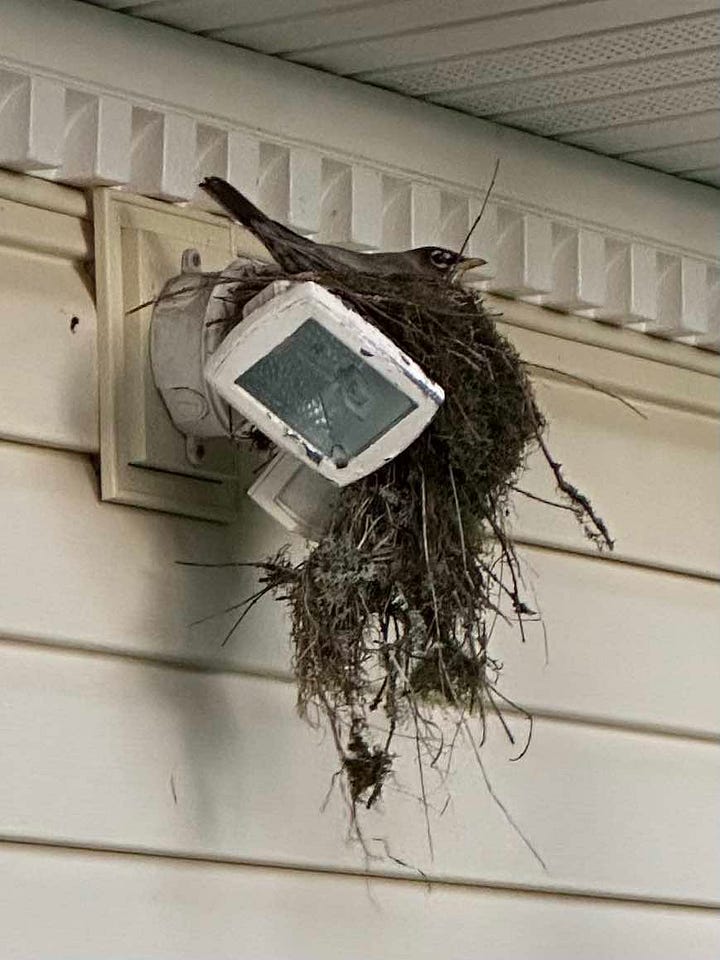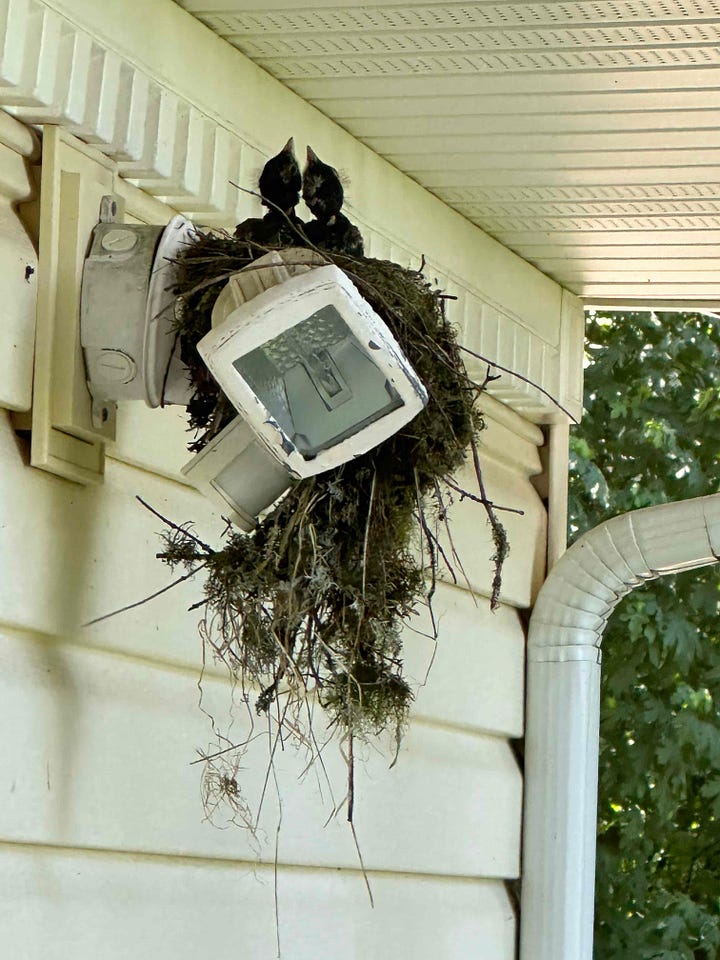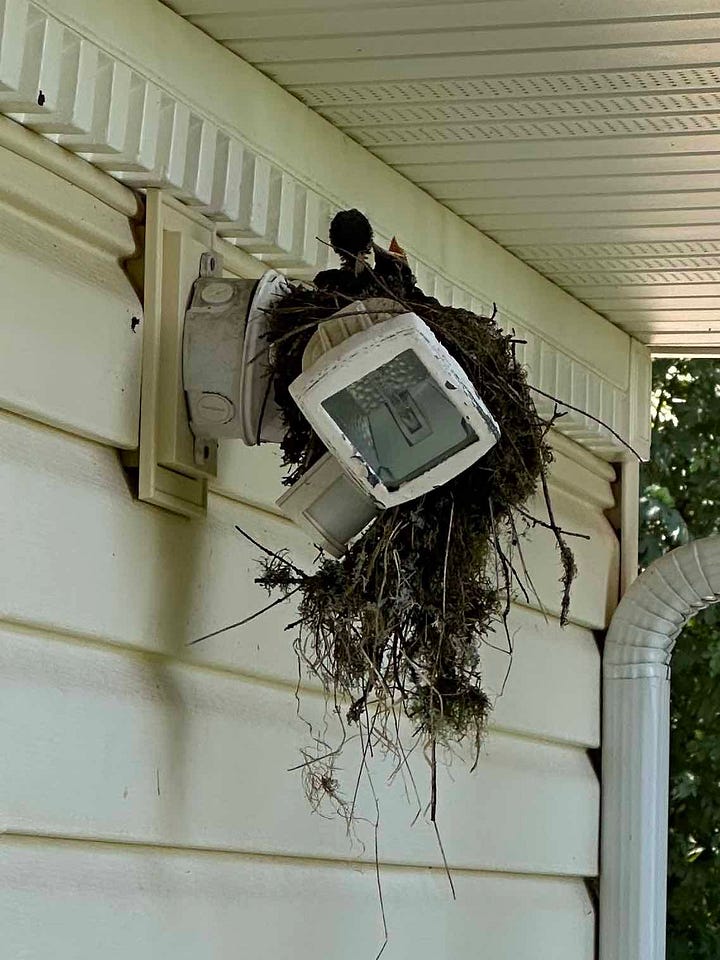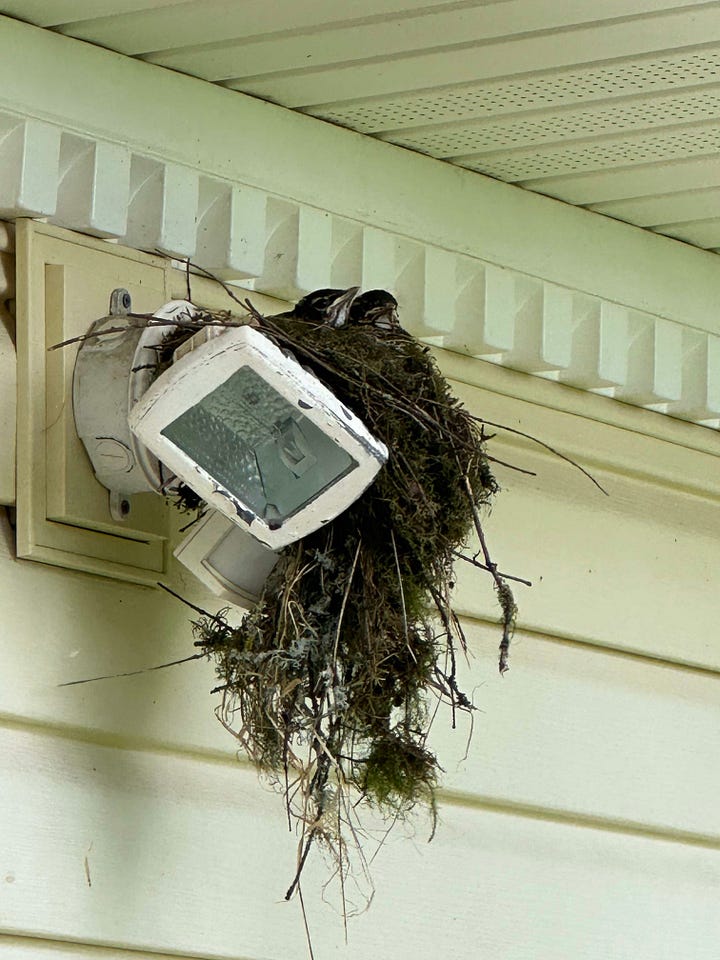How Do Robins Find Hundreds of Worms and Insects per Day?
Greetings!
I’m tossing out much of my usual format this week because it’s been that kind of week. Between appointments, errands, fun, and life, my schedule was thrown all out of whack. Somehow though, I feel OK having this newsletter reflect the freeform flow of my week. With my daughter graduating with her AA next week, there’s a chance next week’s newsletter might also be less rigidly formatted than usual. We’ll see!
This Week
This week’s wildlife adventure has been all about Mama Robin and her babies. I wrote a super short story about it on Medium. I did it as a challenge. The publication I submitted to will not publish anything over 150 words. I used every one of them! Here’s a friend link so you can read for free: Appreciating Nature’s Miracles In Unexpected Places.
It’s been a lot of fun going from watching the nest being built to seeing the hungry babies noisily demanding food. Here are some photos I was able to sneak without upsetting Mama too much. They start while Mama’s sitting on her eggs on May 22. The next two are the babies by the time I could easily see their heads on June 6th, and the last was June 8th. I believe there are only two, but sometimes when I look from the other side, I think there could be a third.




What About…?
How Robins Feed Their Babies
I read that baby robins eat 100-150 meals per day, being delivered by both parents. That’s a lot of worms and a lot of work! After a bit of research, I found out that the babies get fed not only worms but also insects and berries. How do the parents find enough food to keep themselves and their babies fed?
Robins have incredible eyesight that is up to 8x better than humans. They definitely use their vision for finding worms and other crawly things. They can even sense grass blades moving as worms move under the surface. Beyond eyesight though, robins use their sense of hearing. I read of one study where robins’ hearing was obscured by white noise and their success rate at foraging for mealworms was much less than when they could use their hearing.
So, between vision and hearing, robins are very well-equipped to forage for enough food to keep those little mouths fed.
Enjoying this issue? Please click on the ❤️ at the bottom or top of this message so I know you’re out there reading my work.
Exploring More
This week, instead of exploring more about nature, I thought I’d share a bit of behind-the-scenes work on my most recent stained glass piece. I just finished it today! It’s been a really fun piece to work on, and I love that I figured out how to attach the bee so it would vibrate above the flower.
Enjoy your weekend. Take a few moments out in nature, if you can. As always, thank you for joining me. :)
Peace,
Dakota Duncan
If you are new to this newsletter, why not subscribe for free right now?
Have a friend who enjoys wildlife? I’d love it if you shared my work.
Did you know I wrote a graphic novel? Check it out on my website: dakotaduncan.com




